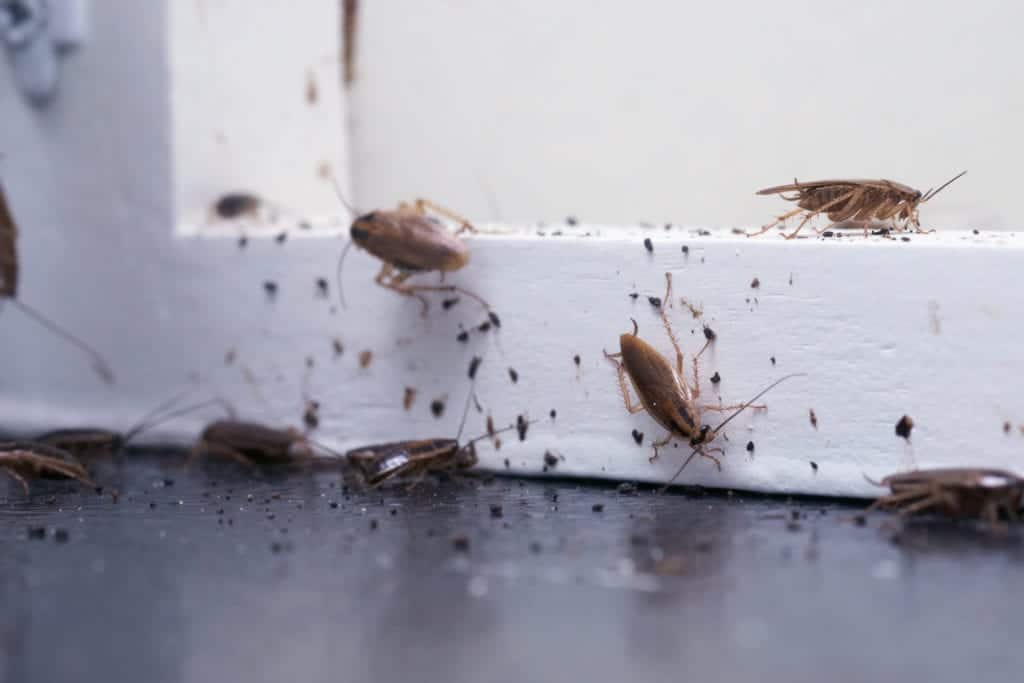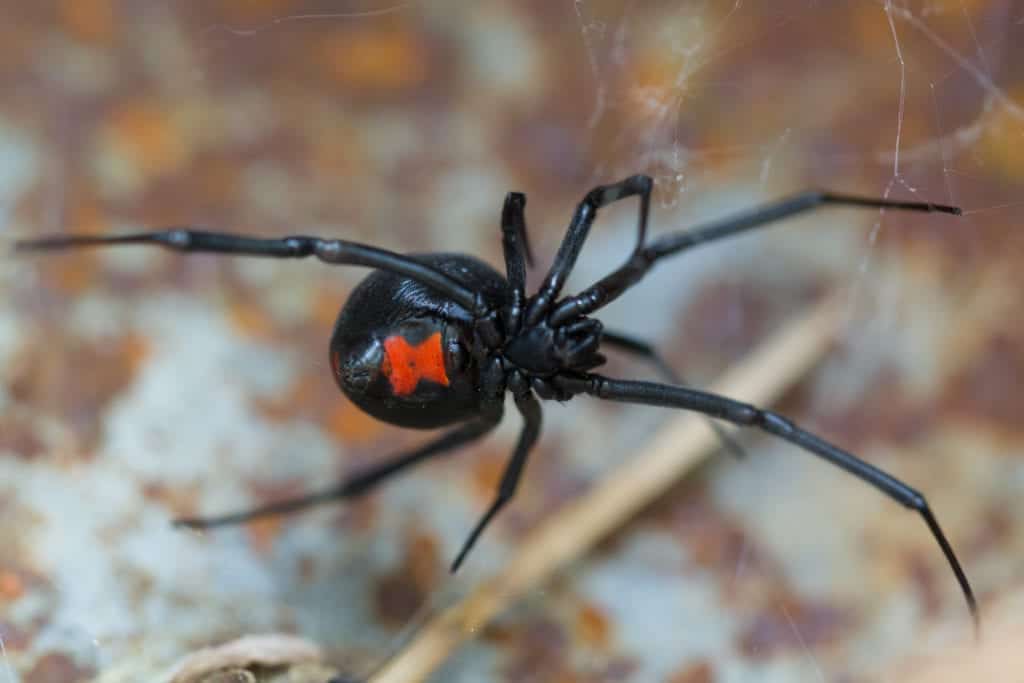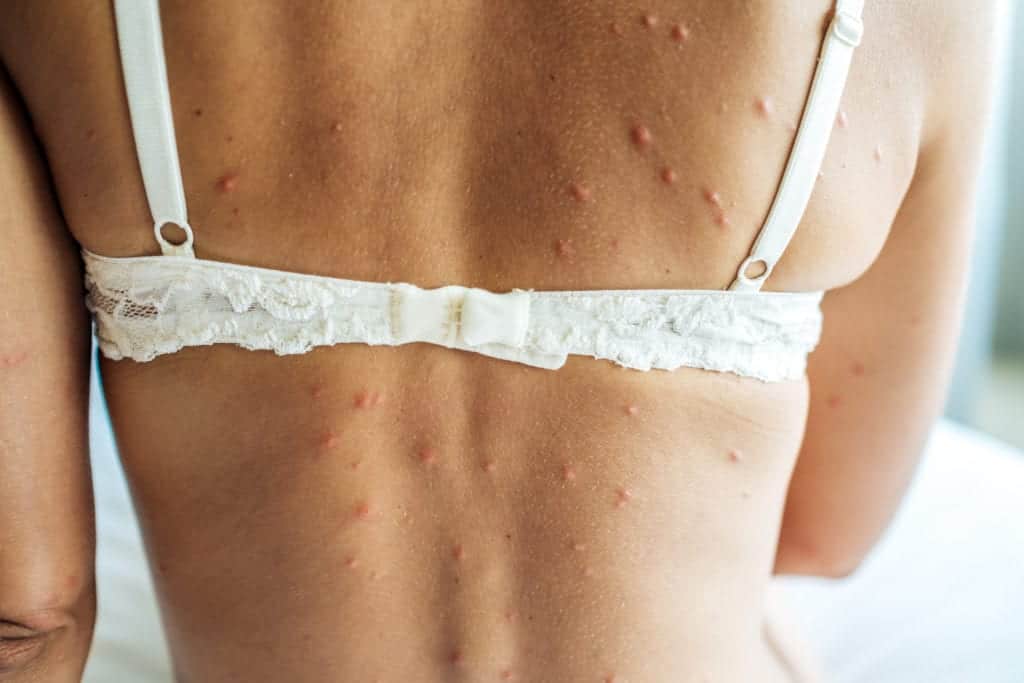Health Concerns of Pests – Part 2
Health Concerns of Pests – Part 2
This Health Concerns Post Series breaks down some of the most common pests and the various medical issues they can cause. In this blog, we breakdown: Cockroaches, Spiders, and Bed Bugs.
Cockroaches
In 2008, the World Health Organization confirmed that there was no “definitive evidence that cockroaches are vectors for human disease.” Furthermore, the CDC confirms that roach bites are exceedingly rare, meaning they do not pass pathogens from person to person similar to ticks or mosquitos. However, while they may not be a true vector of diseases, this does not mean that they aren’t a major health risk for people.
These insects are extremely filthy and can carry bacteria, virus’, fungi, and molds on their bodies, contaminating everything they touch. Roaches also can carry parasites that cause giardiasis (an infection in the small intestines) and dysentery-inducing amoebas. While all of these are serious health concerns, the primary concern typically lies in the significant danger they pose to people with asthma. Roaches leave behind a considerable amount of debris as they slink through your home. They leave droppings, saliva, shed skin shells, severed body parts, and more, all of which can become airborne debris. Once airborne, these allergens can cause severe breathing complications for people with asthma or other breathing difficulties. 
Spiders
Thankfully, most spiders in the United States are relatively harmless… aside from being anxiety/fear inducing creatures. Unfortunately, this is not the case for all spider species and there are a few highly venomous arachnids that can pose a significant threat to your heath and safety. In Illinois, these are the black widow and the brown recluse. Black Widow – Unlike other arachnid bites, the bite of a black widow appears as two clear puncture marks. Black widows have very strong fangs and are easily able to stab through human skin to inject venom into their victims. This venom contains a powerful neurotoxin that will begin radiating pain in the location of the wound before spreading to the chest, other limbs, abdomen or even the entire body. Depending on the amount of venom released, and the health of the individual bitten, these bites can cause extreme health complications and even death. Brown Recluse – The bite of the brown recluse is very painful although, unlike the bite of the black widow, the pain is localized and accompanied by a stinging sensation. These bites originally develop into a blister before eventually splitting into a lesion and, in severe cases, can cause skin necrosis – destruction of the skin tissue. *In the case of both the black widow and brown recluse, it is recommended that you seek medical treatment immediately as both bites can be fatal in extreme cases* 
Bed Bugs
Most external parasitic insects (such as mosquitos, fleas, and ticks) carry and transmit dangerous diseases from person to person. However, bed bugs have highly unique digestive systems that are capable of consuming and destroying most human bloodborne diseases within roughly an hour of ingestion. Since bed bugs feed only once within the span of several days, it is considered virtually impossible for anything to be transmitted from person to person. However, while they may not be able to pass diseases, they can still pose a significant threat to some people’s health. Most people respond to bed bug bites simply by having small itchy red bumps, but in rare cases, people may experience adverse reactions including blisters, swollen tongue, fever, nausea, large red sores, or hives. These are typically signs of allergic reactions and if such symptoms occur, it is advisable to seek immediate medical attention. Unfortunately, recent research has shown that such adverse reactions can begin to occur after receiving repeated bites from bed bugs even if the victim did not have such reactions to begin with. These systemic reactions begin in localized regions prior to spreading out to affect different organs and systems within the body, and can cause lethargy, profuse sweating, chest tightness, respiratory distress, irregular heartbeats, asthma attacks, pruritis (severe itching of the skin), anaphylaxis, and, in rare cases, death. These cases where victims have been bit over months and even years develop reactions that are progressively more severe with subsequent bites, making the chance of a potentially fatal reaction significantly higher. 
Citations
Brouhard, R. (2020) Systemic Reaction Through the Body, Verywell Health. Edited by M. Menna. Available at: https://www.verywellhealth.com/systemic-reaction-1298693 (Accessed: November 2020). Chapter 4: Disease Vectors and Pests (2009) Centers for Disease Control and Prevention. The National Center for Environmental Health. Available at: https://www.cdc.gov/nceh/publications/books/housing/cha04.htm (Accessed: January 20, 2021). Cockroaches (no date) National Center for Healthy Housing. Available at: https://nchh.org/information-and-evidence/learn-about-healthy-housing/health-hazards-prevention-and-solutions/cockroaches/ (Accessed: January 20, 2021). Holland, K. (2019) Everything You Need to Know About Bed Bug Bites, Healthline. Medically reviewed and edited by C. Cobb, DNP, APRN, WHNP-BC. Available at: https://www.healthline.com/health/bed-bug-bites#pets (Accessed: September 2020). Huizen, J. (2020) Bed Bug Bites: What You Need to Know, Medical News Today. Medically reviewed and edited by D. Sullivan, Ph. D., MSN, R.N., CNE, COI. Healthline Media. Available at: https://www.medicalnewstoday.com/articles/318083#control (Accessed: September 2020). Mayo Clinic Staff (2019) Bedbugs, Mayo Clinic. The Mayo Foundation for Medical Education and Research. Available at: https://www.mayoclinic.org/diseases-conditions/bedbugs/symptoms-causes/syc-20370001 (Accessed: September 2020). Mehta, F. (2018) What Happens After a Black Widow Spider Bite?Medical News Today. Medically Reviewed by G. Whitoworth. Available at: https://www.medicalnewstoday.com/articles/313647(Accessed: April 2020). Ray, C. C. (2018) Do Cockroaches Carry Diseases?, The New York Times. Available at: https://www.nytimes.com/2018/08/03/science/cockroach-diseases.html (Accessed: January 20, 2021). Study: Bites Can Induce Potentially Deadly Systemic Reactions (2017) Pest Control Technology. Available at: https://www.pctonline.com/article/study-bites-can-induce-potentially-deadly-systemic-reactions/ (Accessed: November 2020). Sullivan, D. and Frothingham, S. (2020) Are Cockroaches Dangerous? , Healthline. Available at: https://www.healthline.com/health/are-cockroaches-dangerous (Accessed: January 2021). Venomous Spiders (2018) Centers for Disease Control and Prevention. The National Institute for Occupational Safety and Health. Available at: https://www.cdc.gov/niosh/topics/spiders/default.html (Accessed: April 2020).
Request a Free Quote Today
(We do not share your data with anybody, and only use it for its intended purpose)


